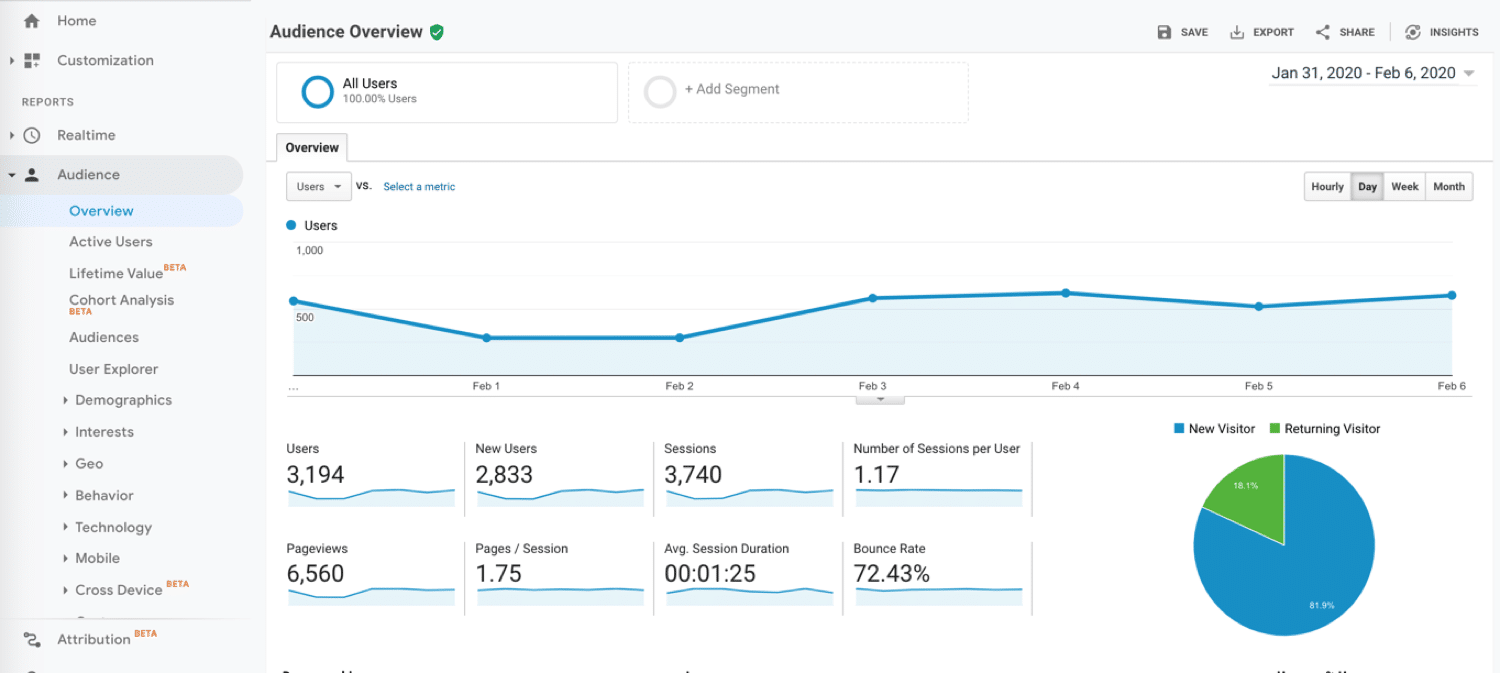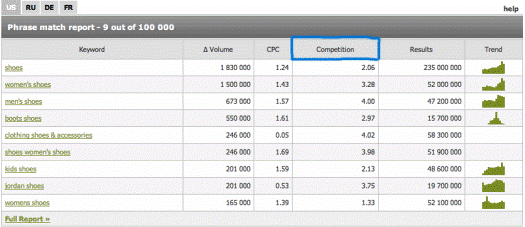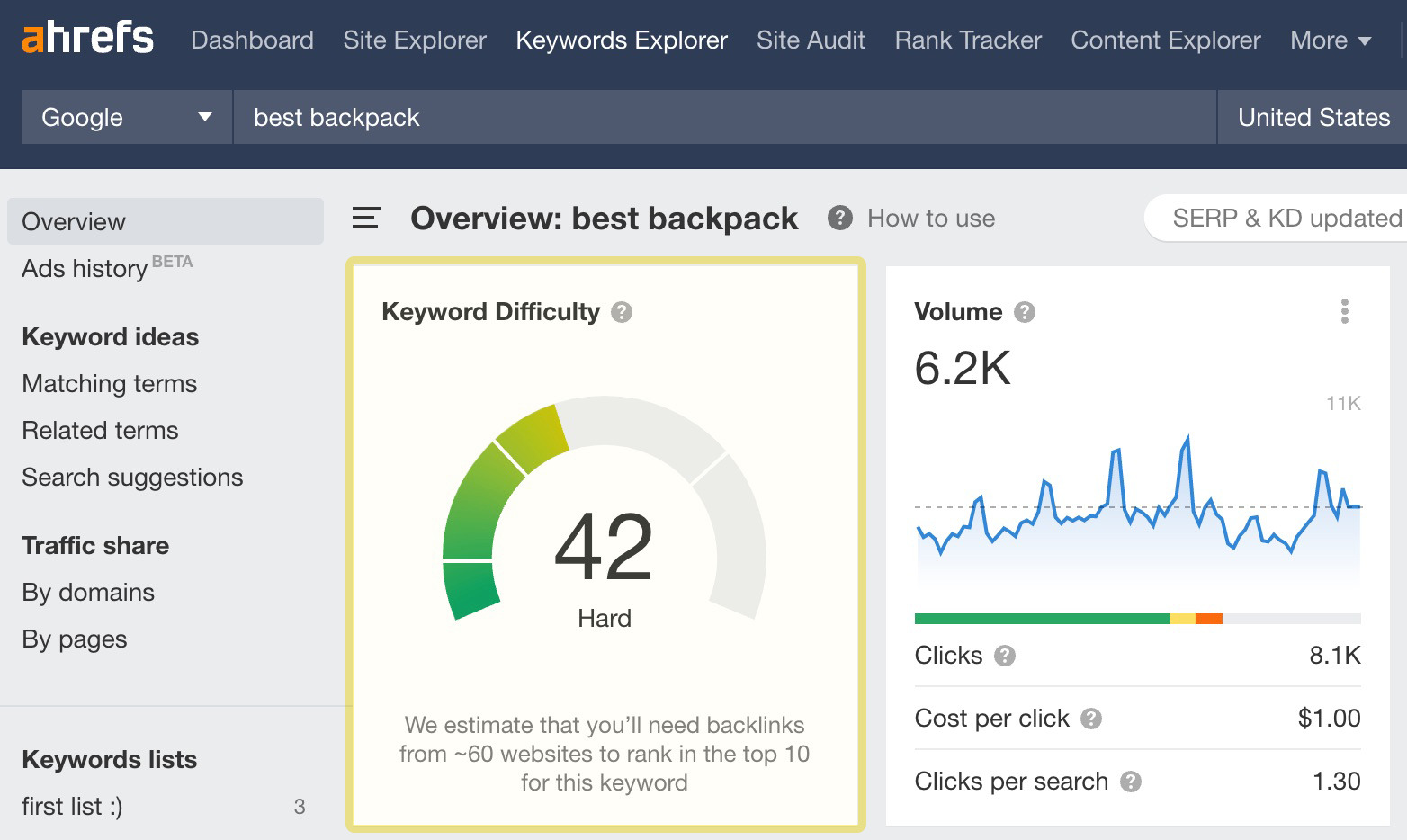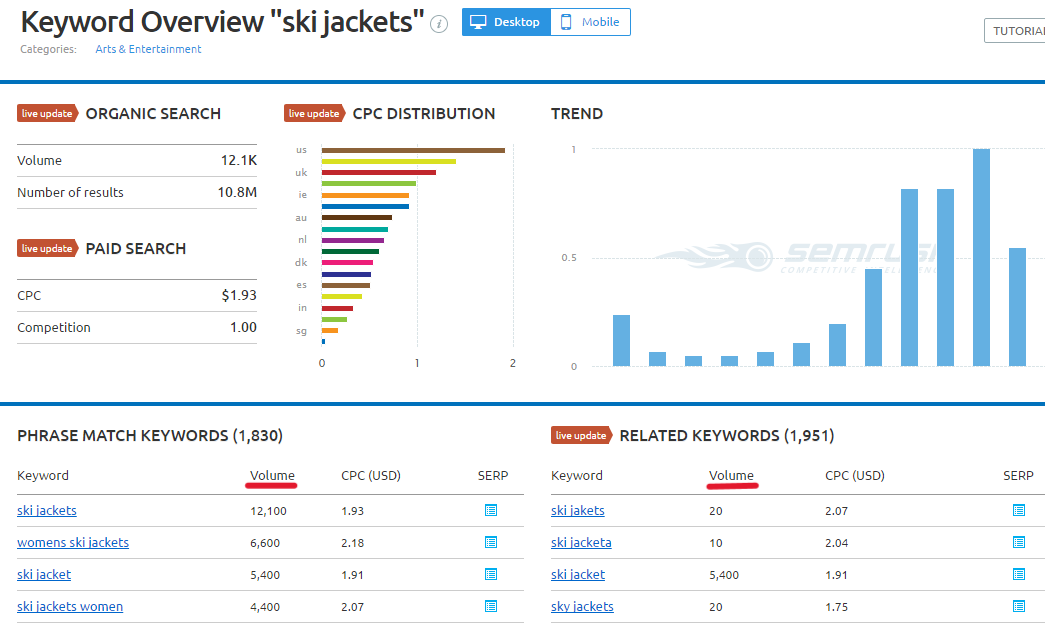In a world where technology never ceases to be necessary, your business will benefit from including specific words on your website. Researching and utilizing the appropriate keywords will help others find your website and understand your product or service. Keyword research will help you understand the wide variety of terms your potential audience uses to find what they’re looking for. The purpose of keyword research is to streamline the process of what your audience is typing into Google so they can find what they need. SEO is still relevant because people continue looking for online information, including clothes. Specifically, targeting the SEO for clothing websites will increase the likelihood of returning customers.
Tips to Find the Best SEO Keywords for Online Clothing Stores
Select Relevant Topics
Look for topics that describe your industry, product, or service. Research and create a list of keyword phrases with good search volume every month. However, the more monthly searches the keyword or phrase has, the more competitive it is. However, using keywords and phrases that have low search volume isn’t always in your best interest. Keywords that have few monthly searches won’t increase your site’s traffic.
If you have a group of SEO keywords you’d like to rank for, be sure to search these phrases on various search engines to see what comes up. You may find that the search intent is different from your presumption. Let’s say you want your website’s razorback athletic clothing department to rank better. This is key regarding how to promote an online clothing store.
Simply searching for “razorback,” you will find that this term is also used to find Arkansas Razorback sports teams, feral razorback pigs, and razorback whales. Therefore, it’s your site’s best interest to add additional terms to “razorback” to match search intent. Generally, it’s better to use two or three-word phrases than single keywords.
Need to know how to do the SEO for clothing websites? Content relevance is key. If the searcher is looking specifically for dog diapers, they will not be interested in your sale on baby diapers. The more relevant your content is, the more value it provides. The more valuable your content is, the higher it will rank in search engines.
Tools To Select Topics You’d Like To Rank For
Ask yourself, “What are five to seven different topics I want my site to rank for?”. Write those topics down and use a tool (or simply your imagination) to develop a list of phrases that contain the keyword.
Some powerful, popular tools you may want to use are:
- SEMrush
- KeywordTool.io
- Moz
- KWFinder
- Ahrefs
- Ubersuggest
- Google Keyword Planner
- SECockpit
- Keywords Everywhere
How To Use SEO Keywords
You can use Google Tag Manager to deploy specific code to your site, especially if you’re not a developer. To set up Google Analytics, update website tags, and understand conversions better, you can use GTM.

(Image Credit: Kinsta)
Google Search Console provides you with the following:
- Data about your search engine rankings
- Shows your which SEO keywords to use to get the most clicks
- The ability to request site recrawls (for when you update content)
- The ability to submit a sitemap
- Site errors
- Penalties
Create Valuable Content
A prime tactic of utilizing SEO for clothing websites is to create content based on what people are looking for rather than just creating content that markets your product. You have to put yourself in the shoes of someone searching on Google, so they can better find your offer.
Consider the specific terms your customer uses to find what they’re looking for. Consider natural language and how most people create search phrases. For example, a man looking for wedding attire is likely to search for a “black tux for a wedding,” “suit for a best man,” or “groomsmen clothing.” To understand the terms potential customers will use, you have to put yourself in their shoes by creating about five target personas.
These personas are also referred to as avatars. Assess your website’s products and decide the types of visitors that will search for them-women looking for corporate clothing, men searching for golf clothing, women looking for cocktail dresses, etc. Give each persona a name, salary, family life, and interests. After creating this avatar, develop content and marketing messages that target this type of person.
Many people purchase clothes to attend specific events, and you can cater to that line of thinking. How popular and timeless are the terms “little black dress” and “golf shirt”? You can rest assured that evergreen terms such as these will be continuously searched for years to come. If your website has already been around for a while, you can reverse engineer this process by discovering the terms people use to find your site.
A HubSpot report or Google Analytics search will allow you to discover these terms. The terms already being used to find your site are called organic search terms. Including more of these in your valuable content will help increase traffic, which may help improve your conversion rate. To fill your list with more relevant search terms, conduct a search on Google and scroll to the bottom to view the related terms. You may find pertinent phrases you’ve never thought of before. The related phrases may spark your imagination to discover new applicable key phrases. For example:
You Might Also Like

Keyword Difficulty, Search Volume, and Competitiveness
Competition
Focus on low-competition keywords if you’ve recently launched your site. You’ll find that ranking is easier when you know how to use SEO keywords for clothing websites. You can depend on low-competition keywords to send you consistent search traffic each month, even without backlinks.
To find low-competition terms, start with seed or broad keywords related to your clothing niche. Choose broad keywords that cannot be interpreted in many different ways. For example, “toddler clothes” is a broad yet specific term. Expand on these seed keywords using the keyword research tools mentioned above. These keyword tools will allow you to generate complete lists of keywords to create content.

(Image Credit: WordStream)
Keyword Difficulty
By researching low-competition keywords, you will generate millions of results that need to be narrowed down. Analyzing keyword difficulty will help narrow the list of words you should use in your content to improve ranking. The keyword difficulty lets you know how hard it will be to rank for a given search term. Ahrefs calculates this number by showing you how many websites link to the top ten pages of a given search term.

(Image Credit: Ahrefs)
Search Volume
After viewing the complex numbers regarding search volume, you can gain a better understanding by analyzing trend history and projections on Google Trends. You can view the term’s popularity by search region on this site. Trends will help you improve marketing with your SEO for clothing websites. Utilize your marketing dollars best by specifically targeting the areas of the country where the term is increasing in volume. You’ll also see related queries that will show you breakout terms.
For example, searching for “cocktail dress” in Google Trends may find that “prom dresses” is a breakout term. With this information, you can better prepare to market to a young female avatar preparing for prom by searching for the ideal dress. You may find that searches for “winter cocktail dress” have increased 450% over the last month, and you will want to adjust your marketing and content strategies accordingly.
Large companies know how to use SEO for clothing websites and tend to go after significant search volume keywords. While you can integrate some of these keywords, you will benefit more in the short term by using keywords with little competition. Your site can begin to dominate these terms by incorporating them into your content.

(Image Credit: Word Stream)
A Few Search Engine Ranking Factors
Understanding Google’s algorithms is an ongoing effort. There are more than 200 factors that affect your page ranking. Most of these factors relate to how valuable users find your site. If visitors come to your site and immediately leave, this results in a high bounce rate, negatively affecting your ranking.
When a visitor stays on your page for a while and clicks links within your site, this lowers your bounce rate and increases your dwell time. You want your store’s dwell time to be as high as possible. Google tracks the user’s session duration and the average number of pages viewed per session. This is why creating valuable content is vital. You need to keep people on your page for a while to have a low bounce rate. To understand your site’s bounce rate, you can use Google Analytics.
According to Littledata.io, a more than 3.6% clickthrough rate places your shop in the top 20% of fashion stores. A more than 5.8% click-through rate places your store in the top 10% of stores.
The Importance of HTML
Your page’s HTML affects your ranking as well. Your main content needs to be within the body tags. Bots use semantic HTML elements to understand the content on the page. Every image on your site needs to have an alt property tag describing the image. Plus, this allows people with visual impairment or assisted devices to understand what is on your webpage. Search engines also read your alt prop tags. Without alt tags, a visitor on your site who loses their internet connection now sees something like “insert text here” rather than a photo description.
By right-clicking on any website and selecting “Inspect,” you can view the HTML markup of the page. Within the body tag and the article tag, you should place the main content of your page. Here, you can include meta tag attributes from schema.org to help Google format the content of your page correctly. It’s debatable how much this method boosts your page in SERPs, but it certainly doesn’t hurt, and you don’t want to leave any stone unturned.
Remember that attributes are camel-cased, meaning there are no spaces and the letter of the first word is lowercase while the second word is uppercased. You’re already familiar with this naming convention if you’re a developer. Some attributes from schema.org that you may want to use specifically for a clothing store are:
- currenciesAccepted
- openingHours
- paymentAccepted
- priceRange
- address
- areaServed
- logo
Metadata
Your website should include metadata for bots. The end-user cannot see metadata, but bots use it to understand the page. This formats the appearance of your search engine listing, the page description, the author, the encoding, and more. The charset is one of the most important pieces of metadata to add to the head element of the HTML code. The charset indicates the type of character set used in the browser and how it should be displayed. The dominant encoding is “utf-8”, which makes up 98% of all web pages.
The “description” meta tag attribute indicates your website’s purpose and the type of content that can be found there. Your description should be thoughtfully well-written, as it can increase the likelihood of your site being found in SERPs. The “viewport” attribute controls the layout of your site on mobile, making it scalable to the device it’s viewed on. This viewport attribute prevents having to zoom in or out to view the content properly, which is bad for user experience and will cause the user to bounce from your site.
The “keywords” meta tag attribute allows you to enter keywords directly relevant to your site. However, this attribute is less used by search engines due to abuse. Due to overexploitation, this attribute should no longer be used in 2022. Want visitors to share their purchases or your store giveaway? To streamline this process, bots use metadata to “prefill” the title and content of a Twitter or Facebook share. When a visitor shares your hyperlink on social media, the meta tags help display the corresponding image and title. You can test this by visiting the Twitter card validator and pasting a link to your site to see if your current meta tags can be used to populate a social media post. Proper metadata helps answer the question of how to promote an online clothing store.
Diib®: SEO for a Clothing Website Done Right the First Time!
Diib® offers a comprehensive service to help you and other small businesses get their SEO done right the first time. Whether you have an online store, brick-and-mortar shop (or both!) or experts can help you master your SEO efforts and improve your ranking in the SERPs. Here are a few of the features of our user dashboard you’ll find exciting:
- Keyword, backlink, and indexing monitoring and tracking tools
- Blacklist monitoring and objectives for repair
- User experience and mobile speed optimization
- Bounce rate monitoring and repair
- Social media integration and performance
- Broken pages where you have backlinks (404 checker)
- Technical SEO monitoring
Click here for your free scan or simply call 800-303-3510 to speak to one of our growth experts.



